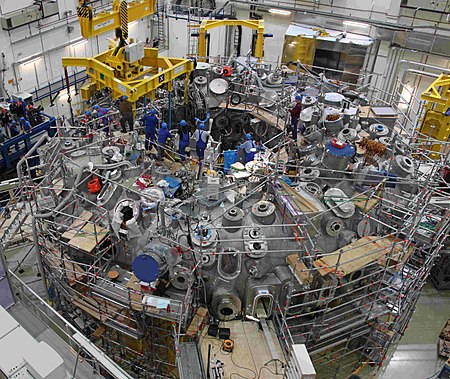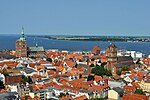Wendelstein 7-X

The Wendelstein 7-X (abbreviated W7-X) reactor is an experimental stellarator built in Greifswald, Germany, by the Max Planck Institute for Plasma Physics (IPP), and completed in October 2015. Its purpose is to advance stellarator technology: though this experimental reactor will not produce electricity, it is used to evaluate the main components of a future fusion power plant; it was developed based on the predecessor Wendelstein 7-AS experimental reactor. As of 2023, the Wendelstein 7-X reactor is the world's largest stellarator device. After two successful operation phases ending in October 2018, the reactor was taken offline for upgrades. The upgrade completed in 2022. New fusion experiments in February 2023 demonstrated longer confinement and increased power. The goal of this phase is to gradually increase power and duration for up to 30 minutes of continuous plasma discharge, thus demonstrating an essential feature of a future fusion power plant: continuous operation.The name of the project, referring to the mountain Wendelstein in Bavaria, was decided at the end of the 1950s, referencing the preceding project from Princeton University under the name Project Matterhorn.The research facility is an independent partner project of the Max-Planck Institute for Plasma Physics with the University of Greifswald.
Excerpt from the Wikipedia article Wendelstein 7-X (License: CC BY-SA 3.0, Authors, Images).Wendelstein 7-X
Wendelsteinstraße,
Geographical coordinates (GPS) Address Nearby Places Show on map
Geographical coordinates (GPS)
| Latitude | Longitude |
|---|---|
| N 54.073 ° | E 13.424 ° |
Address
Wendelsteinstraße 1
17491 , Koitenhagen
Mecklenburg-Vorpommern, Germany
Open on Google Maps








